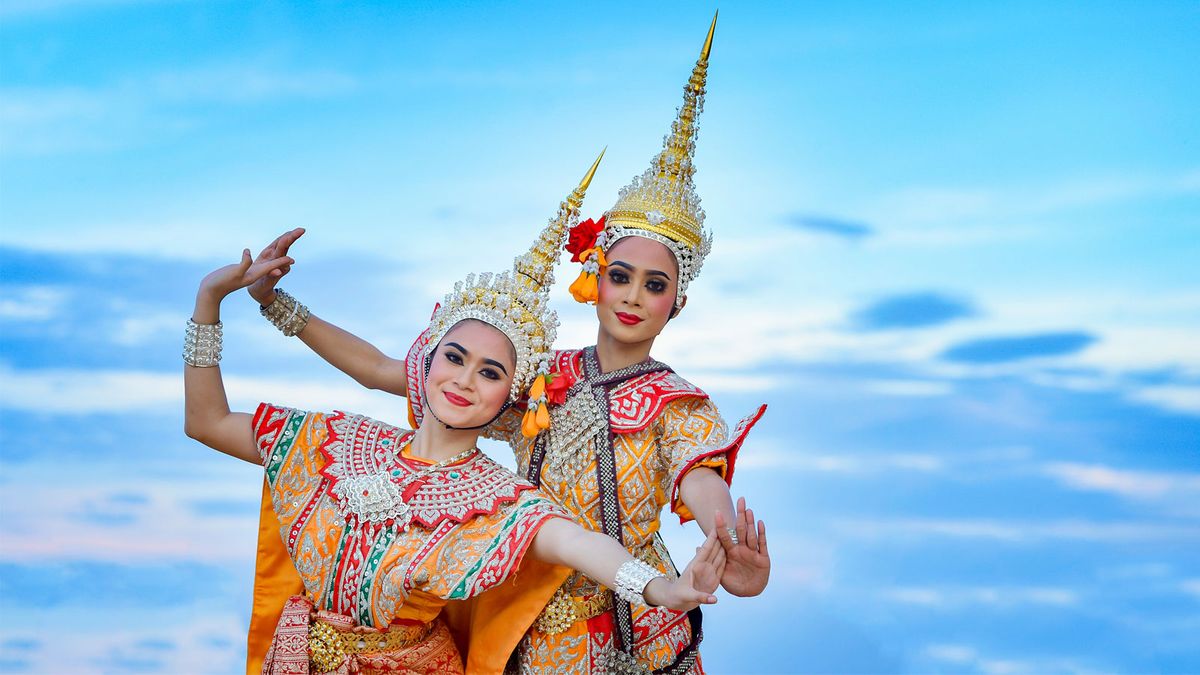What’s the first image that pops up in your mind when you think about Thailand? Beaches, islands, inexpensive shopping, a notorious and colourful nightlife in Bangkok and Thai Curry? While Thailand can boast of all of the above, it also has another side to it - its gorgeous temples (called Wats locally) and the scenic, mountainous area of northern Thailand.

An hour and 15-minute flight from Bangkok takes you to the pretty, hilly city of Chiang Mai. We chose to fly by Thai Smile and highly recommend them for being fuss-free and serving fun and tasty snack boxes. Founded in 1296, Chiang Mai was the capital of the independent Lanna Kingdom until 1558. The higher altitude, chilly mountain air, clear blue skies and warm sunshine make the city popular for its weather too.
We stayed at the charming De Lanna Hotel. The hotel is centrally located within the city walls, yet serene and the food is delicious. Though there were ample places to eat, we kept returning to our hotel for several meals.
Doi Suthep, Chiang Mai
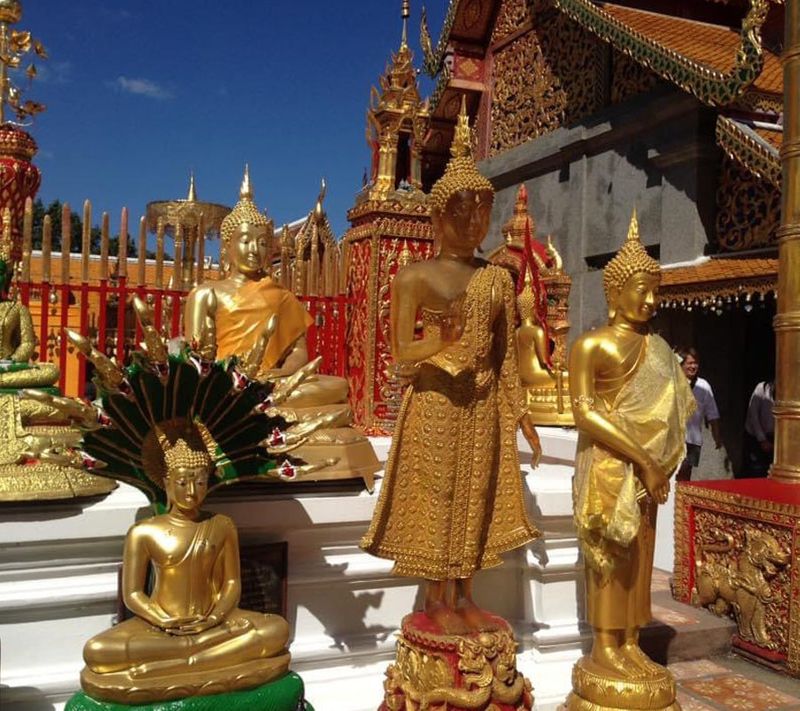
The first temple we visited was Doi Suthep, a Buddhist temple (wat) named after the mountain where it's located, 15 km from the city of Chiang Mai. Situated at an elevation of 1,073 m, the temple offers impressive views of downtown Chiang Mai. The terrace at the top of the steps is dotted with breadfruit trees, small shrines, rock gardens, and monuments, including a statue of the white elephant that carried the Buddha relic to its current resting place.

If you have difficulty in climbing steps, there is also an elevator, so look for it. The shimmering golden statues at the terrace and their scattered placement are quite unlike the ones you’ll see in the rest of Bangkok. Before entering the inner courtyard, children pay their respects to a lizard-like guardian dragon statue. We bought pretty dragons skillfully made of ropes by a local artist at the temple.
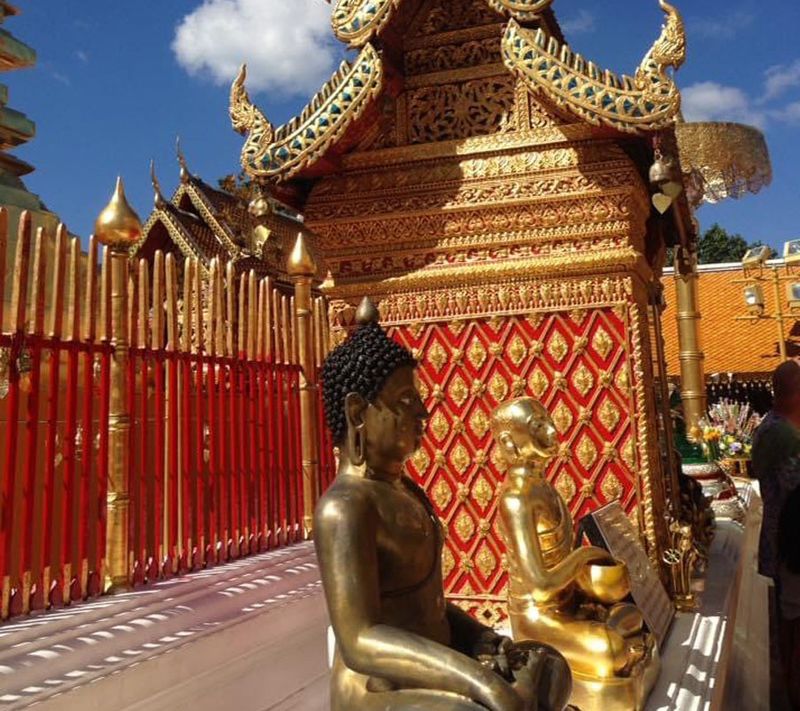
Wat Chedi Luang - The Temple Of The Great Stupa, Chiang Mai
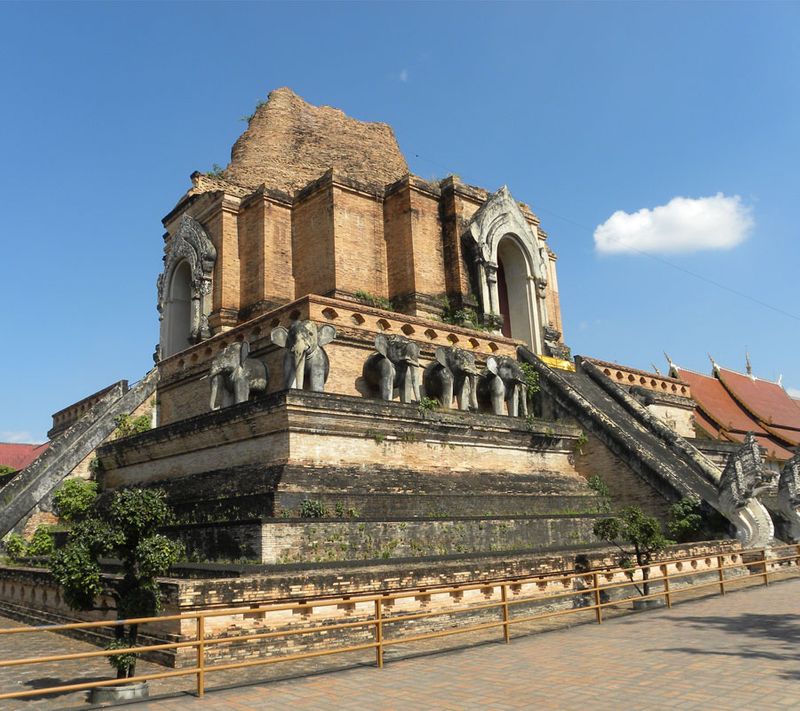
This one looked straight out of a lavish period drama. This 14th-century Buddhist temple is located in the historic center of Chiang Mai. It is an example of beautiful Lanna architecture and remains one of the tallest temples in the city. At one time, the pinnacle of the chedi (pagoda) rose over 80 meters. The construction of the original chedi was completed in 1481 during the reign of King Mengrai. This was destroyed in 1545 due to an earthquake. A restoration project by UNESCO and the Japanese government in the 1990s helped restore the temple to some of its former glory. It now measures around 60 meters.
The temple was earlier also famous for housing the Emerald Buddha, one of the most important religious relics in Thailand, which was later moved to Wat Phra Kaew in Bangkok’s Palace grounds in 1475. Wat Chedi Luang now houses a jade replica which was given to the city as a gift from the Thai king in 1995 to celebrate the 600th anniversary of the chedi.
Wat Rong Khun, Chiang Rai
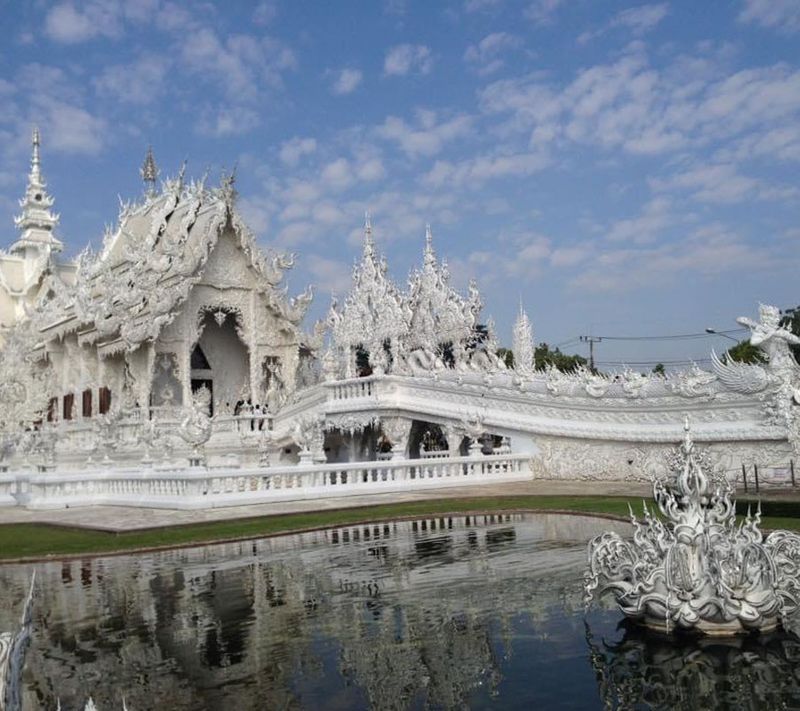
A three-hour-long excursion from Chiang Mai will take you to Wat Rong Khun, at Chiang Rai, popularly known as the ‘White Temple’. This temple is privately owned by a gentleman called Chalermchai Kositpipat, a local artist from Chiang Rai, who designed, constructed, and opened it to visitors in 1997. When we first saw the shimmering structure we were awestruck. The sparkling white temple made of white plaster and glass inserts has become a popular tourist attraction over the years and Instagrammers have contributed greatly to its popularity.

By the end of the 20th century, the original Wat Rong Khun was in a bad state of repair. Funds were not available for renovation; that's when Kositpipat decided to completely rebuild the temple and fund the project with his own money. While Wat Rong Khun is a Buddhist temple, it challenges the basic design and decoration of a traditional Buddhist temple which is usually bright and colourful. Breaking the traditional concepts, the stark whiteness of this complex is somewhat eclectic.
There are elements from different styles and times of both traditional Thai and Hindu architecture. There is only one building in the complex that is golden and not white, and it is where the washrooms are located. This too is symbolic, the guide told us - the golden colour is a criticism of the common obsession of people with money and wealth. There is also a small museum dedicated to Kositpipat's work, next to the temple. While it’s difficult to get a clear shot of the temple with the large number of visitors flocking to it, when you do find the correct angle, you’ll be delighted with the rather dramatic nature of the photograph.
Wat Phra Kaew – Temple of the Emerald Buddha
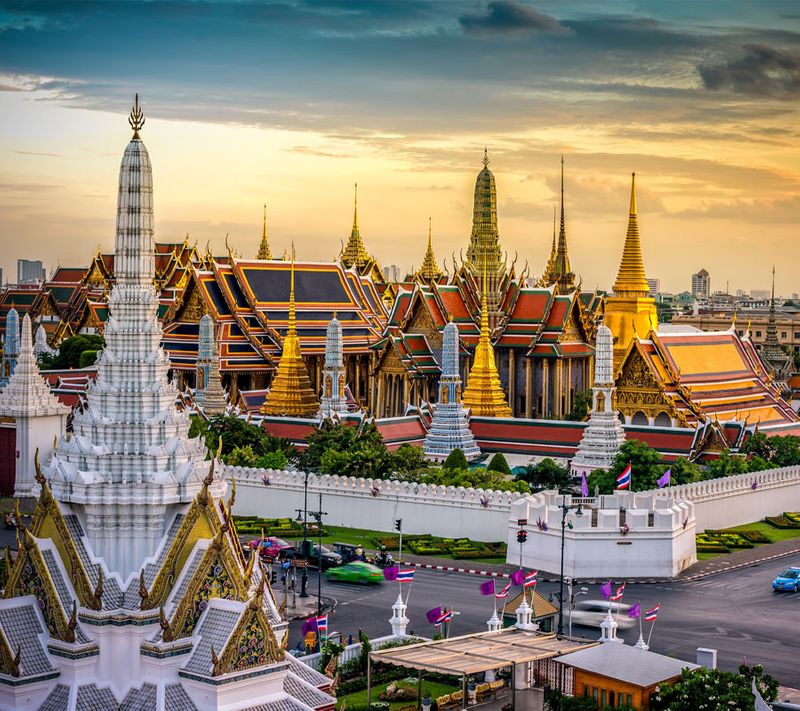
The Wat Phra Kaew is a Buddhist temple located in the centre of Bangkok, the capital of Thailand. It was built by the end of the 18th century, inside the grounds of the Royal Palace close to the banks of the Chao Phraya river and it consists of a series of structures, all enclosed by a perimeter wall. The Grand Palace is a complex of buildings and has been the Thai King’s official residence since it was built in 1782, and also includes the Royal Court, and the administrative seat of government for more than 150 years. While the palace is now only used on ceremonial occasions, it is one of Bangkok's biggest tourist attractions.
More recently, we had heard about the palace when the coronation of King Maha Vajiralongkorn took place on 4 May 2019. The temple of the Emerald Buddha is in the southern part of the complex. The Buddha is located at the end, in a very elaborate golden setting. It is 66 cm in height, 48.3 cm in width, and is carved from a single piece of grey-green jasper found in Africa and India (not emerald as its name implies). It is revered for its protective powers)
Wat Pho or Temple Of The Reclining Buddha, Bangkok

This is one of the most popular Buddhist temples in Bangkok and is usually on every tourist’s list, founded during the 16th century and later served as The Royal Temple of King Rama I of the Chakri Dynasty. There was a large crowd of tourists that had come to see the sacred 46-meter Reclining Buddha whose feet are beautifully inlaid with mother-of-pearl, carved with holy signs. This, however, isn’t the only special thing about the temple.
Wat Pho is known to be the ‘nation's first public university,’ owing to its 1,360 marble inscriptions about medical, historical, and liberal sciences. These inscriptions are also considered the wisdom on which the Wat Pho Thai traditional massage is based. While one can enroll and learn these massage techniques here you can also avail of the services in a nearby pavilion. We were fortunate enough to be able to book ourselves a very effective session. The slots are subject to availability.
Wat Arun or Temple of Dawn, Bangkok

Despite the popularity of the other temples, Wat Arun was our favourite in Bangkok. Named after the Indian Hindu God of dawn, Arun, the temple lies on the banks of the Chao Phraya river. From across the river, one can see the 82m-high spires of the white temple embellished with beautiful mosaics of porcelain and shells, which make up floral patterns. According to our guide, after the kingdom of Ayutthaya was destroyed, King Taksin stumbled upon a small local shrine and thought that this should be the site of the new capital of Siam. In the afternoons when the sun shines it lights up the spire of the temple and the river behind it. The temple is also a great place to watch the sunset over the river. Wat Arun also looks gorgeous when the sun goes down and the temple lights come on. The design of the temple is quite different from all other Thai temples.

The temples of Ayutthaya
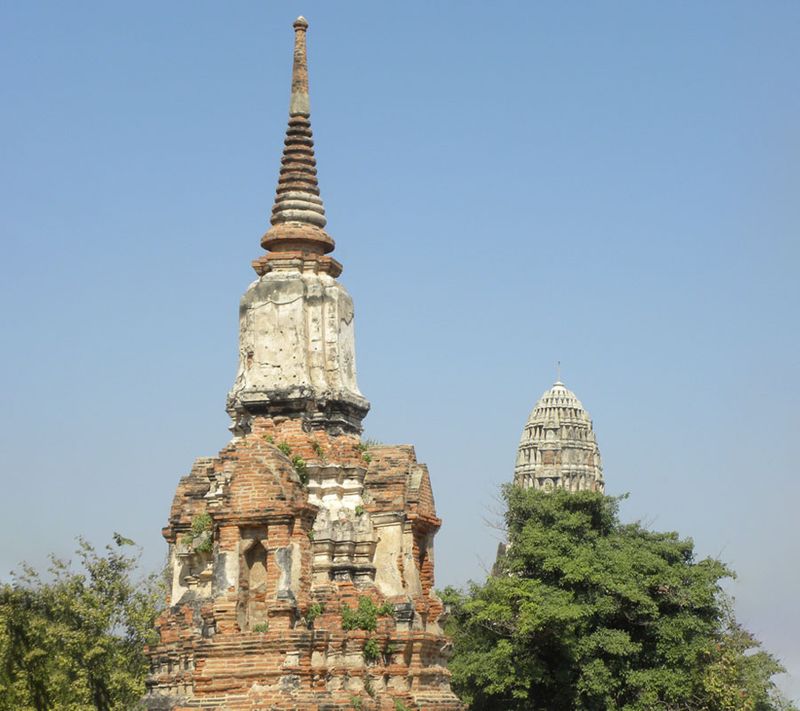
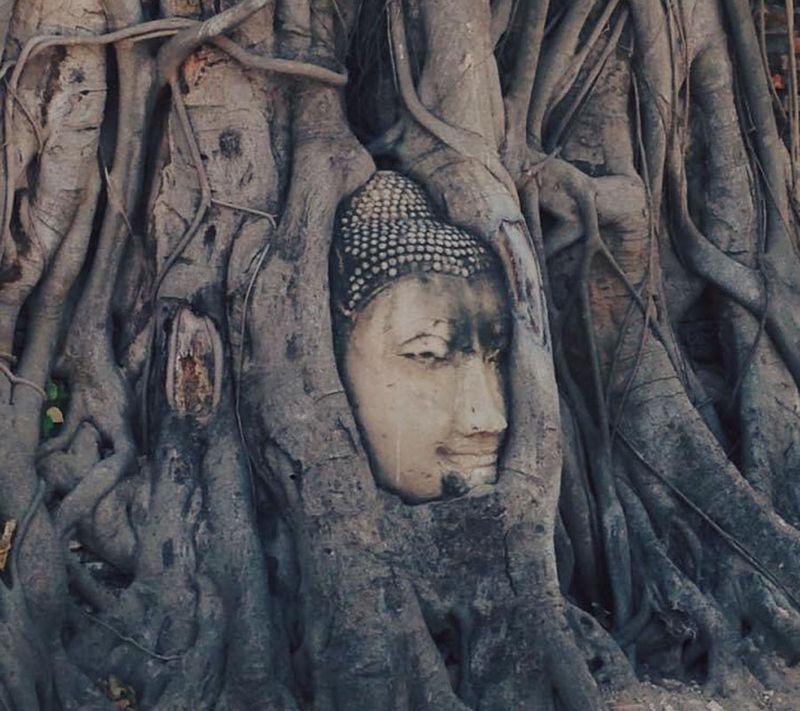
We took a day trip 80 km north of Bangkok to the ancient city of Ayutthaya. Don’t miss this one. The city was the erstwhile capital of the Kingdom of Siam until it was attacked and destroyed by the Burmese in 1767. It was one of the biggest cities in Southeast Asia and a regional power for 417 years. The ruins of the old city now form the Ayutthaya Historical Park, an archaeological site that contains palaces, Buddhist temples, monasteries, and statues and it has been recognised as a World Heritage site by UNESCO. The architecture of Ayutthaya is a fascinating mix of Khmer and early Sukhothai styles. Of the temples in Ayutthaya, Wat Phra Mahathat is one that you must visit to see its famous tree, the roots twisting and weaving around a Buddha's head. The Ayutthaya Historical Study Centre, dedicated to the history of the island and its culture is also a must-see to get a picture of what this beautiful city was like in its days of glory.


